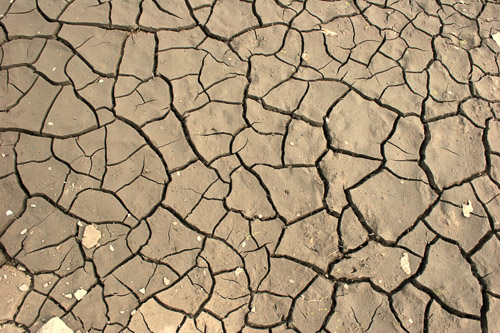Drought is marking the beginning of the end

By Adaleida Cochrane/The Guardsman
Gov. Jerry Brown announced in mid-January that the current drought had reached a state of emergency, but it took me until the rain began to admit how bad this could really be.
For months, I had put the buzzing responses to news comments regarding the drought to bed with flippant arguments such as “Haven’t we been in drought for decades?” and “Isn’t southern Calif. always on fire anyway?”
I knew that my denial was rooted in the fact that I feel largely powerless over this issue.
I think we all know this climate change is the result of global warming and the people who really matter don’t care.
Not that I don’t believe in being conservative with my carbon footprint. I recycle, bike, take short showers, etc.
I believe we should all be conscientious with our waste and aware of our effects on our surroundings.
When you look at the numbers it is hard not to realize that we can shrink that footprint down to a pinprick and it will hardly do anything to mitigate the damage done by the big business policies of this country.
I should go see a glacier as soon as possible before the inevitable strikes.
I grew up in rural northern Calif. and we had a lot of issues with forest fires.
In 1999, the fire season lasted from August to November. One fire came an eighth of a mile from our house before it was put out.
Southern Calif. is now expected to have an unending fire season due to lack of rain.
The “it” moment in climate change we have all been waiting for might just be happening right now.
Calif. is currently experiencing one of the worst droughts since record-keeping began 150 years ago. We are smack in the middle of what Mother Jones magazine calls one of the worst droughts in 500 years and we could be in for a mega-drought predicted to span the next 200 years or more.
It is too late for rain to mend the damages.
National Geographic speculates that it could last another 200 years.
Dr. Peter Gleick, co-director of the Pacific Institute, a water-focused research nonprofit, explained that because Calif. reservoirs are already depleted from a dry past two years rain is crucial.
“We need a really, really wet rest of the season. And that’s statistically unlikely,” Gleick said.
Calif. uses 80 percent of its water supply for agriculture.
The Central Valley has been the biggest hit area of this three-year drought, which means that beef and milk prices are likely to go up as grazing pastures shrink.
But it is not just the animals that are affected.
Milt McGiffen, a vegetable crops specialist at University of California at Riverside, said that since farmers have been unable to plant many seeds, artichokes, celery, broccoli and cauliflower, just to name a few, could rise in price at least 10 percent.
Calif. is also the top producing state for lemons, limes, peaches, strawberries, almonds, walnuts and pistachios. All of these and other crops could be facing problems in production.
So let me get this straight. We might run out of water and our crops might dry up, but this is bigger than just Calif.
Food prices are on the rise, the state is supposed to go up in flames and we are being asked to watch our water waste? That cannot be a long-term solution, if there even is one.
Because if it is really as bad as everyone is saying, I won’t have time to go see a glacier. At this rate, I might as well stay home and wait for them to float by.

Comments are closed.